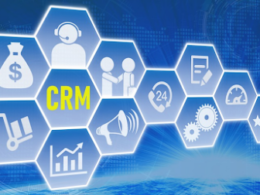The mobile app industry is an ever-changing landscape, with new technologies and trends emerging on a regular basis.
It’s nearly universal that people possess their own smartphones and the utilization of it is growing. The average U.S. adult dedicates around 3 hours and 54 minutes of their day using their mobile device, according to eMarketer.
Mobile applications are built to work with different operating systems, meaning the use of these apps differ depending on the type of device people have. People are now able to access digital content from a wide range of devices, including smartphones, desktops, tablets, laptops, watches, smart TVs, smart vehicles and smart home appliances.
As we move forward, it’s important to stay ahead of the curve and be aware of the latest mobile app trends. From artificial intelligence and machine learning, to augmented reality and cloud-based applications, there are a lot of exciting trends to look out for. With the right strategy, businesses and developers alike can stay ahead of the competition and ensure their apps remain competitive in the market.
Let’s look at seven of the top mobile app trends to watch out for in 2023.
Artificial Intelligence (AI)
AI is one of the most talked about trends when it comes to technology. However, the term AI actually refers to a couple of different technologies that can be used in apps.
First, there is natural language processing, which is the ability of computers to understand human language. This is what makes it possible for Siri to translate your requests into actions or for Google to help you find what you are looking for online. The second type is machine learning, which is a type of artificial intelligence that enables computers to learn through experience. Machine learning is used by computers to improve their ability to perform tasks through patterns, experience, and data.
AI is already being used by many businesses to improve customer experience, streamline operations, and increase productivity. In the coming years, we can expect to see more businesses leveraging AI to create personalized experiences for their customers.
Machine Learning (ML)
ML is one of the most common types of AI being used in apps today. However, there are key differences between it and AI as a whole.
ML is a subset of AI and refers specifically to the use of algorithms to identify patterns in data and make predictions based on that data. This is useful for apps when you want your app to learn from previous user behavior and adjust future interactions based on that. Because ML is used for pattern recognition and prediction, it’s more about the analysis of data than developing new insights. ML-based apps can also be used to create personalized experiences for customers. For example, fitness apps can recommend customized workout regimens based on previous user behavior, such as the number of workouts they have completed or their preferred workout intensity.
Security and Privacy
As more businesses adopt digital technologies, security and privacy are becoming increasingly important. After all, nobody wants their data to fall into the wrong hands. Fortunately, security and privacy are an important topic in the tech industry right now, with new innovations emerging all the time.
One of the latest trends in security is called end-to-end encryption. This means that the data being sent between the user and the server is encrypted. This prevents anyone who might have access to the data in between the user and the server from being able to see it.
There are several different encryption methods available, such as Code Signing Certificate, Transport Layer Security (TLS) and Advanced Encryption Standard (AES). Businesses can also use privacy-focused platforms such as blockchain, which can protect data from being accessed by third parties.
Augmented Reality (AR)
Augmented reality apps use computer-generated images or sounds to enhance a real-world environment. Apps like Pokémon Go and IKEA Place let you visualize furniture in your home and see how it would look in your space. This technology can be used in many different industries. For example, medical students can use AR to visualize body parts, engineers can use it to visualize blueprints, and retailers can use it to show customers how a product would look in their homes.
The hardware needed for AR is becoming more accessible, with more affordable AR apps, AR tools, and AR headsets being released. Additionally, a number of AR app development platforms are now available that make it easier for app developers to create AR apps. This makes AR more accessible for businesses of all kinds, as it doesn’t require the same level of expertise.
Cloud-based Applications
Cloud-based apps are those that are hosted on a remote server, such as Amazon Web Services, or a third-party data center. These apps are accessible via the internet and can be accessed from any device.
There are a number of advantages to using cloud-based apps. These apps can be accessed from anywhere with an internet connection, which is particularly useful for businesses with employees who work remotely. Additionally, cloud-based apps are scalable, which means that a business can add additional servers and capacity when needed to accommodate high traffic periods. This also means businesses don’t need to worry about expensive upfront hardware costs as they scale up their application usage.
Internet of Things (IoT)
The Internet of Things (IoT) refers to the interconnection of devices and sensors that collect data and exchange that data via the internet. There are already a number of businesses that are leveraging IoT in order to improve customer experience and operational efficiency.
Retail stores can use sensors to track inventory, temperature, and what products are selling the most. This information can then be used to optimize the way stores are run and help customers find what they want more efficiently. The healthcare industry is another area where IoT can be used to improve care. In fact, a number of hospitals have begun using IoT to track equipment and patient data, allowing staff to spend less time on administrative tasks and more time caring for patients.
Wearable Devices
Wearable devices have been popping up for a few years now. These devices can include everything from fitness trackers to augmented reality glasses. Wearable devices have become more common in recent years, as the prices of these devices have dropped significantly. Additionally, companies are starting to invest in wearables, highlighting by Google’s acquisition of Fitbit in 2021.
It’s estimated that wearable device shipments will reach 1.29 billion in 2023, which is a 68% increase from the 728 million devices shipped in 2018.
Conclusion
There are a lot of exciting trends in the mobile app industry. From the growth of AI to the use of wearable devices, technology is evolving. These trends will not only affect how businesses operate, but also how developers design and build their apps. To stay ahead of the curve, businesses should consider investing in new technologies and hiring developers who are up to date on the latest mobile app trends.





